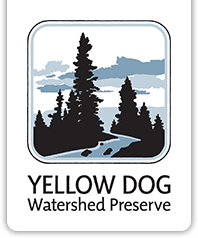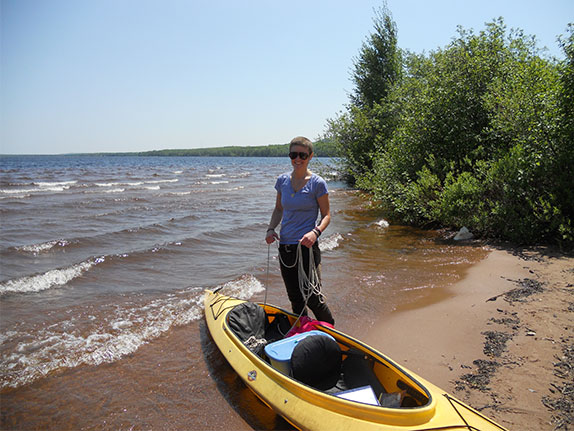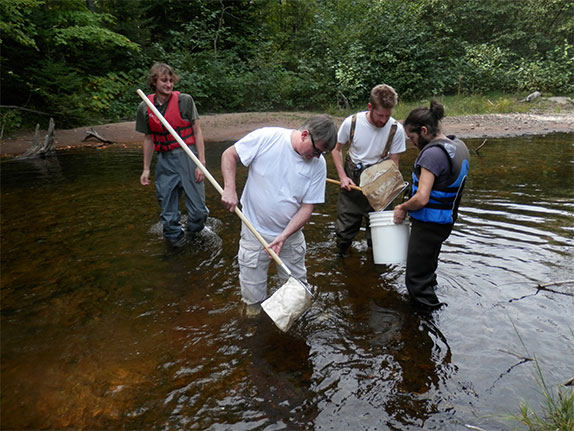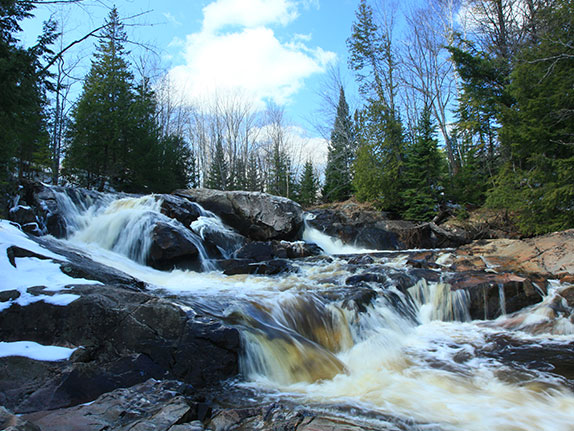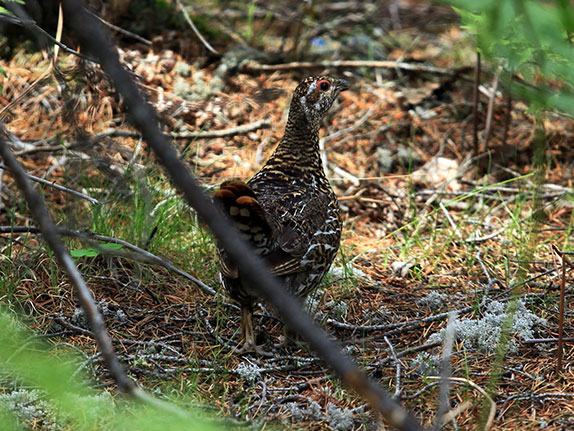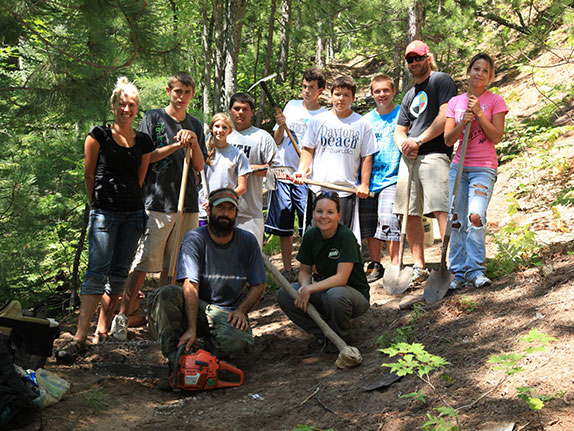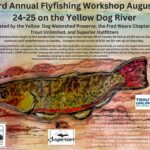
Mining
Issues & Advocacy
Since 2003, The Yellow Dog Watershed Preserve has dedicated significant time and resources to protecting the watershed from the multilayered threat of sulfide mining. The Eagle Project, a nickel and copper mine on the boundary of the Yellow Dog and Salmon Trout watersheds, has been our primary concern.
History:
During 1970s, the USGS conducted mineral exploration on the Yellow Dog Plains in which surveys identified rock types commonly associated with nickel mineralization. In the early 1990s, mineral companies, including Rio Tinto Kennecott, began leasing state owned land and mineral rights from the Michigan Department of Natural Resources, and in the 2000s, the push toward extraction began.
To extract this type of ore, mining companies use a process commonly referred to as sulfide mining, which can pose a significant threat to the environment and particularly the underground water. Acid mine drain is one of these potential hazards. The ore body on the Yellow Dog Plains lies directly under the Salmon-Trout River in a watershed directly adjacent to the Yellow Dog River. From the beginning of the Eagle Mine proposal to present, the integrity of our environment, the health of our air, water, human and animal life are major concerns.
YDWP began collecting water quality data for the Yellow Dog River in 2003 and in the Salmon Trout in 2012 in response to these environmental threats . YDWP partnered with Keweenaw Bay Indian Community, Save the Wild UP (now Mining Action Group), and others to become an integral part in drafting state legislation , the 2004 Michigan’s Nonferrous Mining Regulations, to help ensure ecological protection. YDWP along with the Mining Action Group keeps a vigilant eye on mining activities, permitting changes, and adherence to regulations concerning Eagle Mine and the Humboldt Mill. For more information about Mining in the Upper Peninsula including Eagle Mine, Aquila Back Forty, and more, go to the Mining Action Group’s website .
The history of Eagle Mine—permitting, protests, changes to the landscape–is long. Ultimately, production began in 2014 after Kennecott sold the project to Lundin Mining Corporation, who predicts the mine will remain operational through 2025. The mine has been monitored since 2012 by the Community Environmental Monitoring Program (CEMP) through Superior Watershed Partnership in cooperation with Keweenaw Bay Indian Community and the Community Foundation of Marquette County. CEMP is independent, and monitors air quality, groundwater quality, surface water quality, wildlife, plant life and more. The results of their research is available on their website.
Other Areas of Advocacy;
YDWP monitors the Yellow Dog Watershed for other sources of pollution including sedimentation, erosion, and unsustainable resource management. We advocate for best management practices from the timber industry, particularly in regards to road building and stream crossings. To prioritize some of these issues, YDWP developed a Watershed Management Plan (WMP), approved by the Department of Environmental Quality (now changed to Department of Environment, Great Lakes and Energy-EGLE). The WMP addresses both point and nonpoint source pollution (NPS) and advocates for feeder stream connectivity and bank restoration wherever necessary to ensure water quality and to enhance brook trout and wildlife habitat.
In addition, YDWP is a member of the Wild and Scenic Rivers Coalition and is researching the possibility of further Wild and Scenic River designation for the Yellow Dog River. Currently, the first four miles of the river that flow within the McCormick Wilderness are designated Wild and Scenic. In 2018, YDWP created the Wild and Scenic Yellow Dog River story map to highlight this area. The story is available under the Education and Outreach tab.
Finally, through a grant from Freshwater Future, YDWP has presented at six different township board meetings and planning commission meetings in order to inform members of the problems along the river and to ask for their collaboration in solving or preventing future issues by increasing zoning setbacks for buildings along the river, and by providing more information to landowners applying for building permits. We will continue these conversations into the new year. Also through this grant, we have been able to reach out to landowners in the Yellow Dog watershed to provide information on the importance of creating or maintaining buffer strips and the advantages that native plants bring. See the presentation under the Education and Outreach tab titled, “Preserving Shorelines and Protecting Water Quality.”

